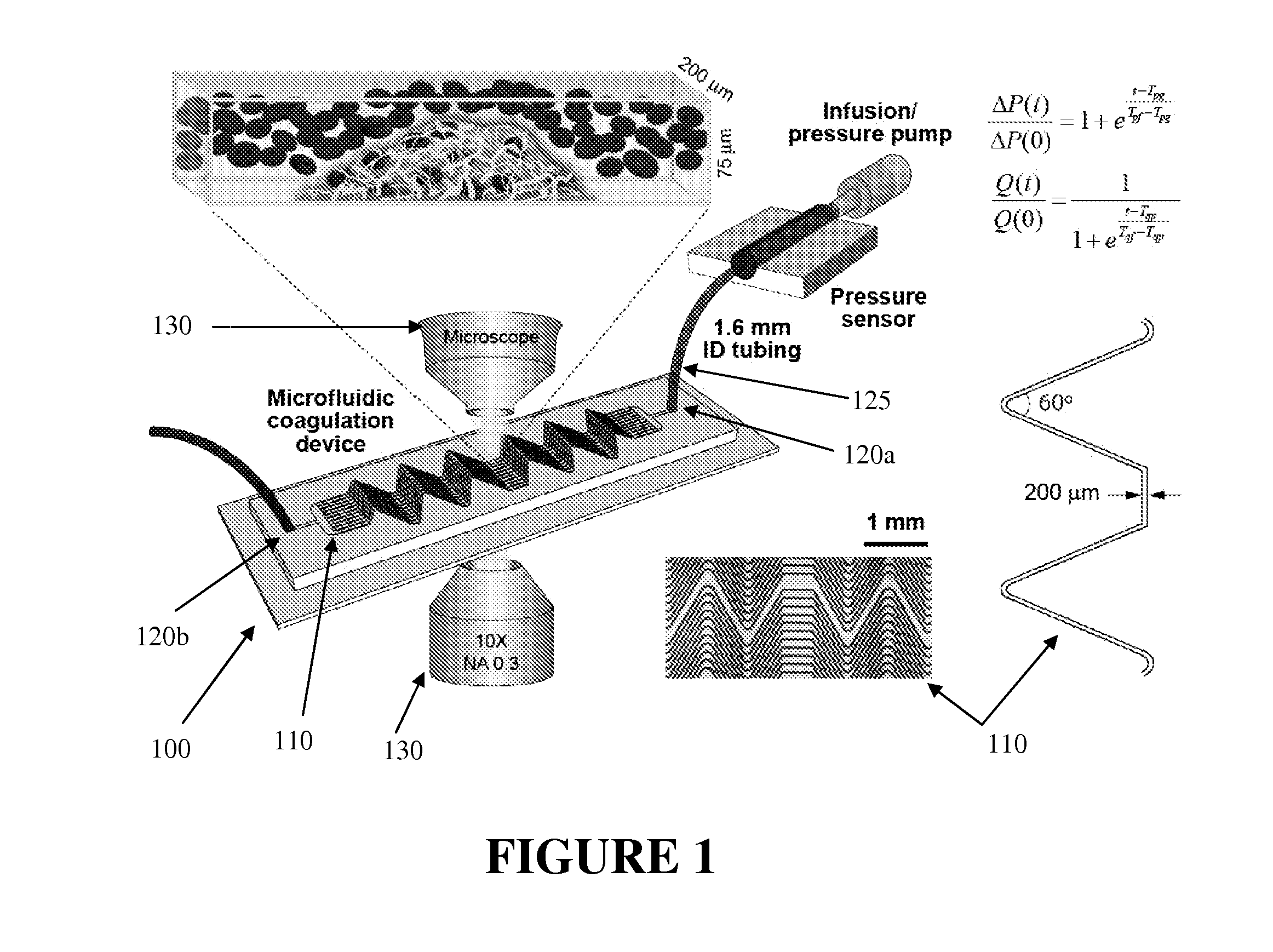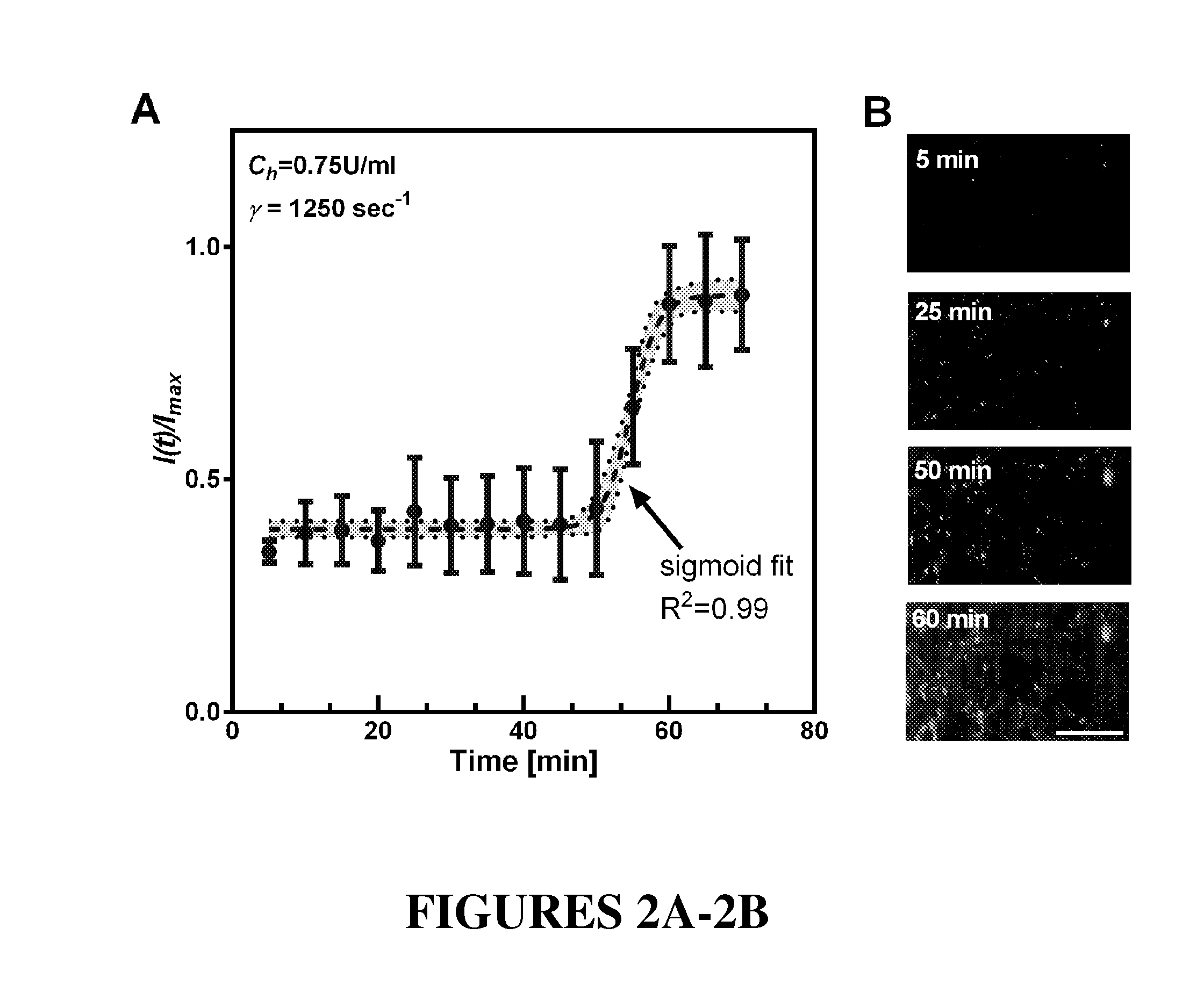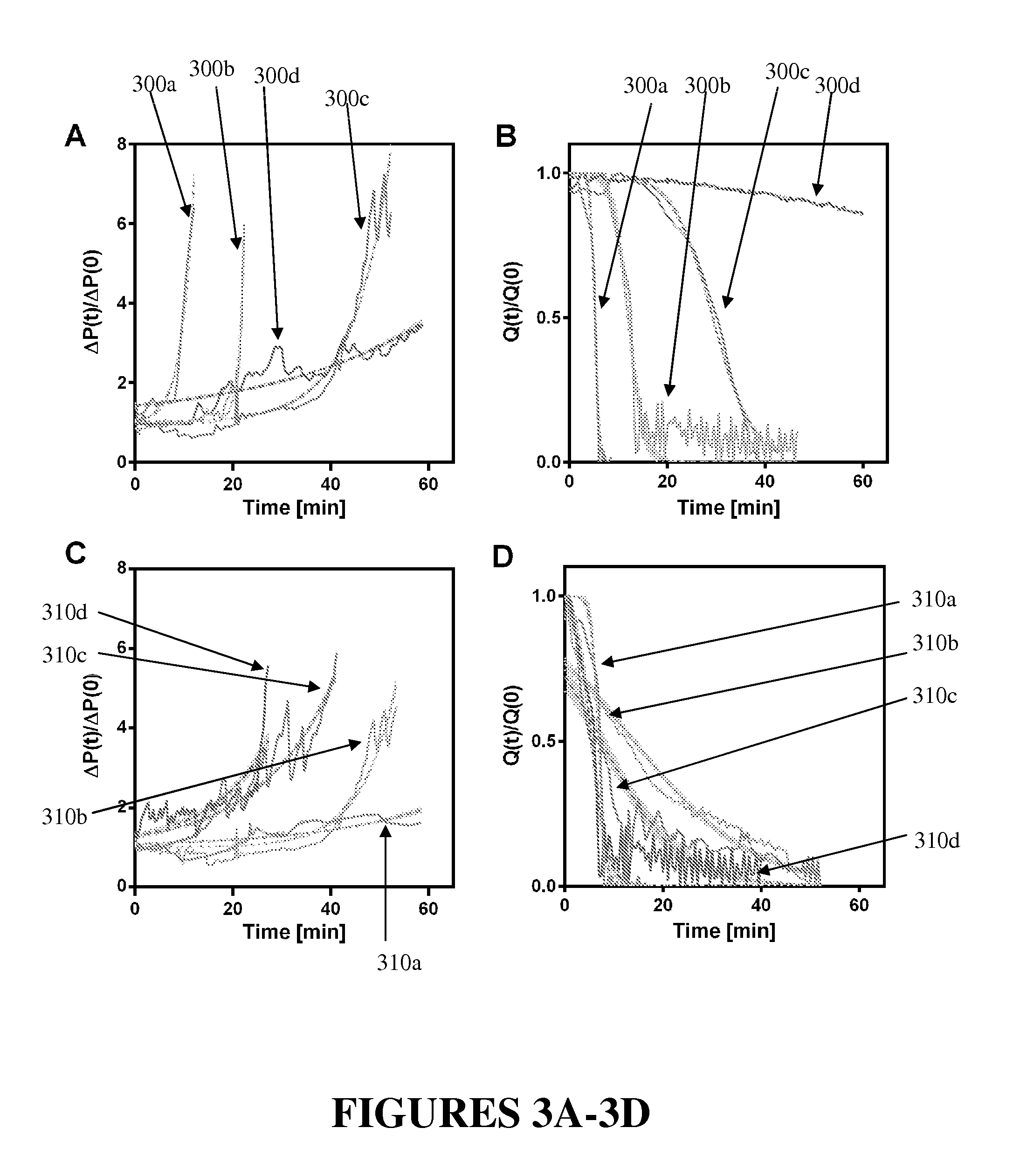A microfluidic device for real-time clinical monitoring and quantitative assessment of whole blood coagulation
a microfluidic device and whole blood technology, applied in the field of microfluidic diagnostic devices, systems and methods for real-time assessment of whole blood coagulation, can solve the problems of poor specificity and sensitivity of these tests, difficult to quickly and quantitatively ascertain the degree and efficiency of whole blood anti-coagulation and anti-platelet therapy, etc., to achieve the effect of enhancing hemostasis assessmen
- Summary
- Abstract
- Description
- Claims
- Application Information
AI Technical Summary
Benefits of technology
Problems solved by technology
Method used
Image
Examples
Embodiment Construction
[0039]As discussed herein, the inventors found that clotting dynamics were sigmoidal and, based on this observation, the inventors developed and experimentally validated phenomenological mathematical models that accurately predict the temporal dynamics of whole blood clotting for both injection modes when either anticoagulant (heparin) concentration or applied shear rate is varied. The developed models reveal two clotting times: one indicates when clotting initiates, and the other determines when full vascular occlusion is produced. These models also incorporate the biophysical effects of fibrinogen diffusive transport and platelet aggregation. The inventors demonstrated, further, that the microfluidic device can, for example, be integrated with automated fluorescence imaging to enable simultaneous quantitation of coagulation and platelet aggregation. Accordingly, the multifunctional coagulation analysis system described herein is able to provide a quantitative standard for monitori...
PUM
| Property | Measurement | Unit |
|---|---|---|
| hydraulic diameter | aaaaa | aaaaa |
| size | aaaaa | aaaaa |
| size | aaaaa | aaaaa |
Abstract
Description
Claims
Application Information
 Login to view more
Login to view more - R&D Engineer
- R&D Manager
- IP Professional
- Industry Leading Data Capabilities
- Powerful AI technology
- Patent DNA Extraction
Browse by: Latest US Patents, China's latest patents, Technical Efficacy Thesaurus, Application Domain, Technology Topic.
© 2024 PatSnap. All rights reserved.Legal|Privacy policy|Modern Slavery Act Transparency Statement|Sitemap



